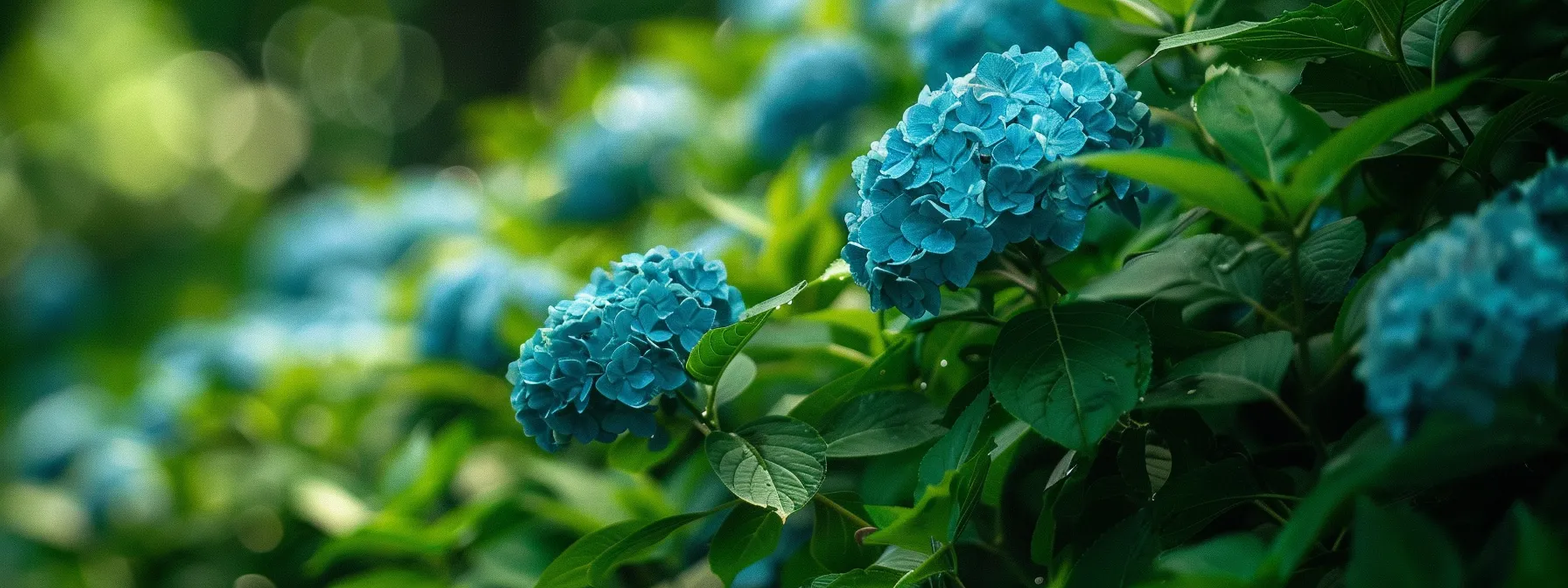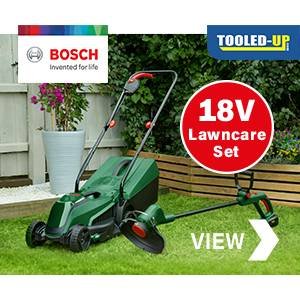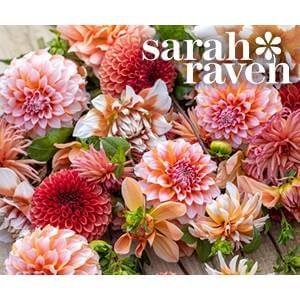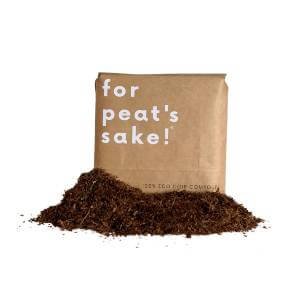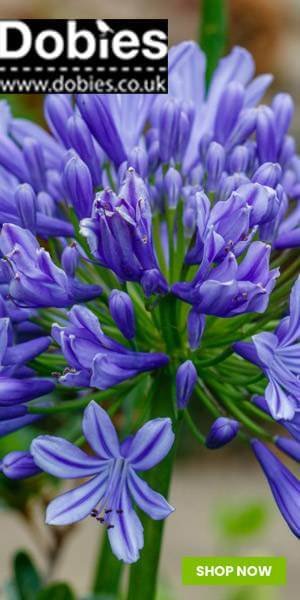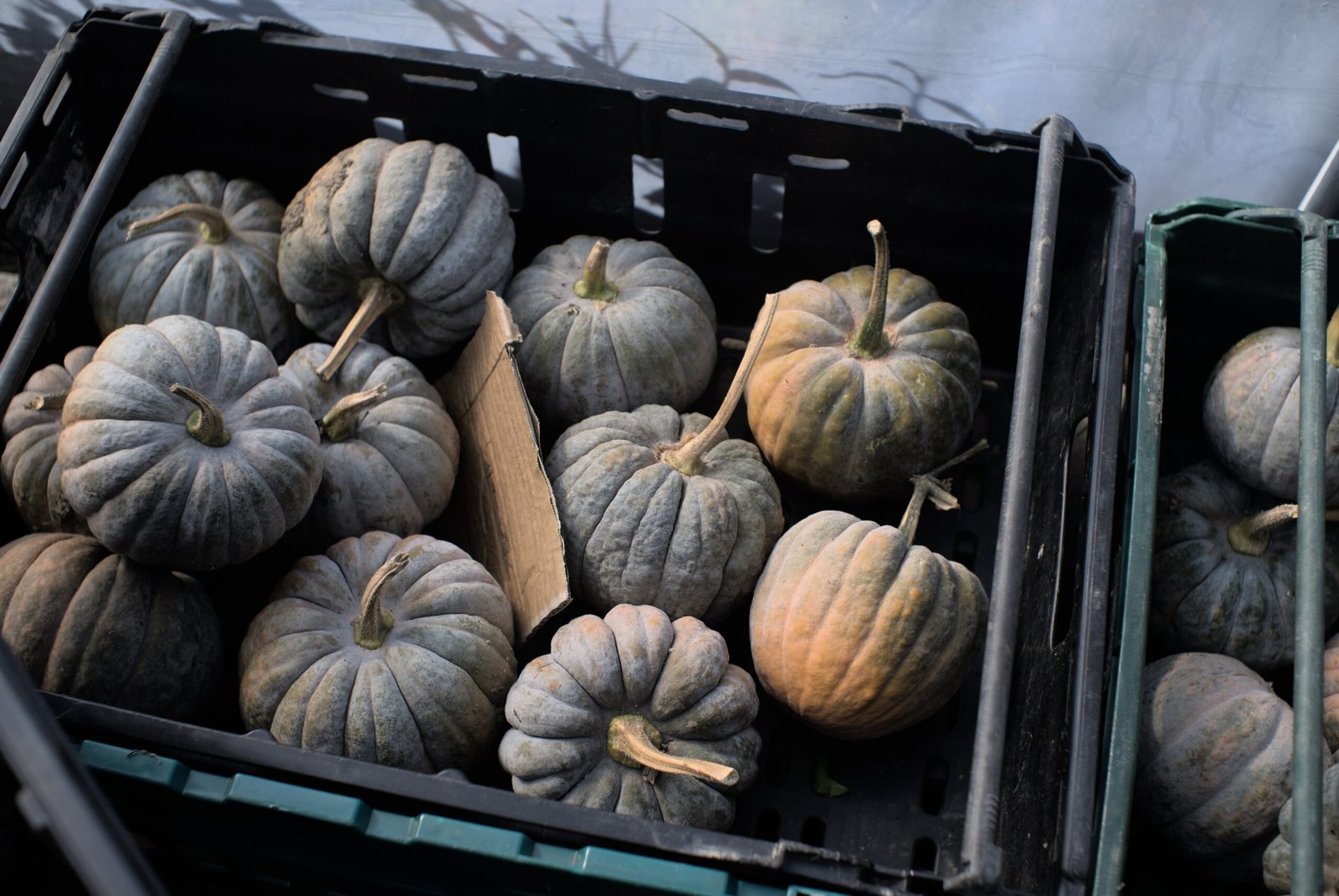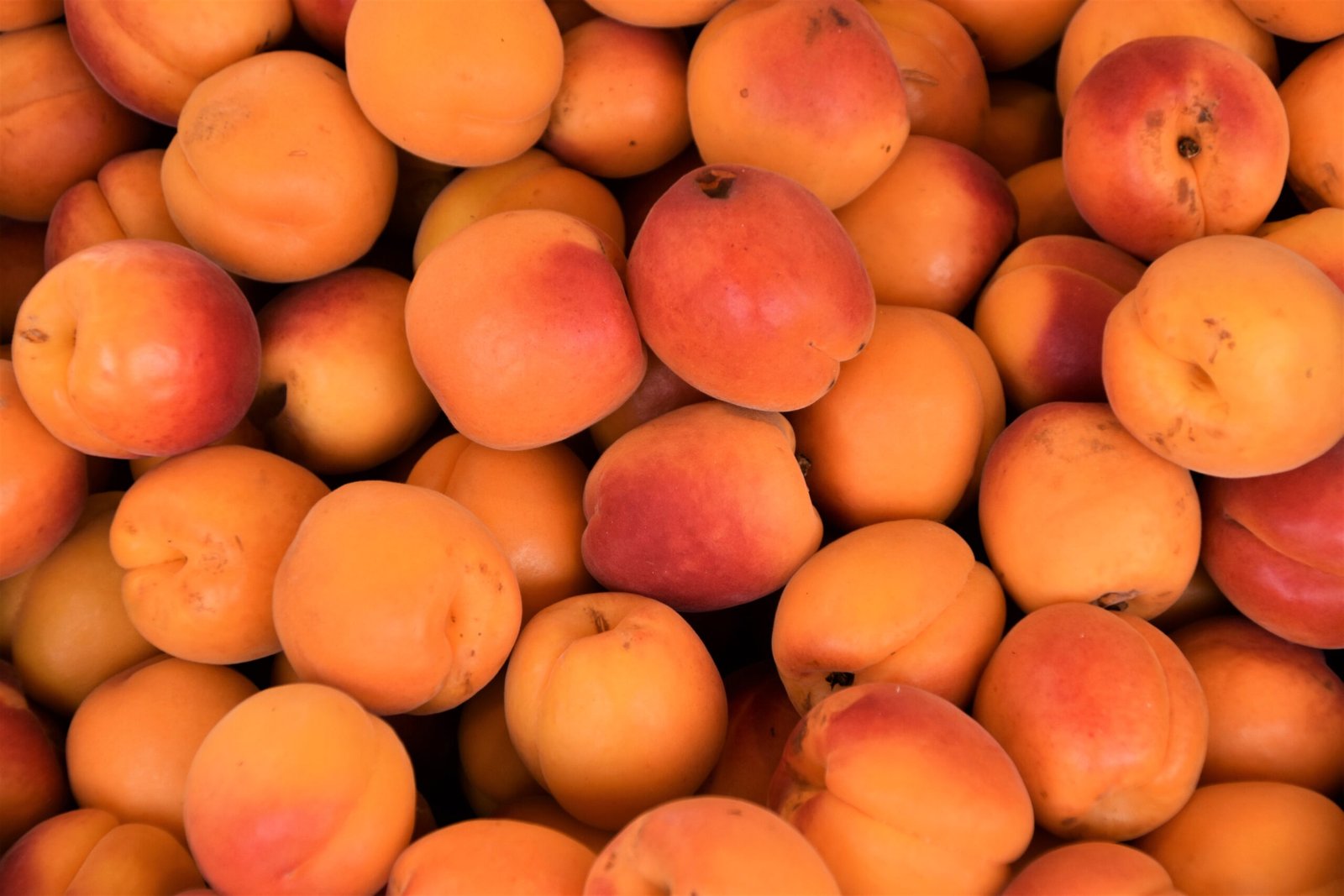Hydrangea Care: A Comprehensive Guide for Thriving Plants
Hydrangeas are captivating plants that bring vibrant colour and elegance to any garden. From the delicate blooms of Hydrangea anomala to the bold, showy flowers of other varieties, these versatile shrubs offer a stunning display throughout the growing season. With proper care, hydrangeas can thrive and produce an abundance of blossoms, rivalling the beauty of any fruit or flower in your outdoor space. In this comprehensive guide, we’ll explore everything you need to know about hydrangea care, from planting and watering to pruning and pest control. Keep reading to discover how to cultivate healthy, flourishing hydrangeas that will be the envy of your neighbourhood.
Key Takeaways
- Hydrangeas offer diverse options for gardens, from climbing varieties to shrubs and container plants
- Proper soil preparation, pruning, and maintenance are crucial for healthy hydrangea growth and blooming
- Climbing hydrangeas thrive in partial shade and require sturdy support structures for their vigorous growth
- Propagation through softwood cuttings allows gardeners to expand their collection of climbing hydrangeas effectively
All You Need to Know

Hydrangeas offer a wealth of beauty to gardens, but their care requires attention to several key factors. From selecting the right variety and planting at the optimal time to ensuring proper soil conditions and addressing potential issues like frost damage or pests, nurturing these stunning shrubs involves a comprehensive approach. Whether you’re growing hydrangeas in the ground or containers, understanding their needs for water, nutrients, and positioning is crucial. This guide covers essential aspects of hydrangea care, including soil preparation, root establishment, leaf health, and even propagation from seed, to help you cultivate thriving plants that will grace your garden with their magnificent blooms.
Choosing a Hydrangea
Selecting the right hydrangea variety for your garden begins with understanding the different types available. From compact shrubs to climbing vines and even small trees, hydrangeas offer diverse options to suit various landscapes and preferences. Consider factors such as available space, desired bloom colour, and local climate when making your choice.
Assess your garden’s conditions to determine which hydrangea species will thrive best. Some varieties prefer full sun, while others flourish in partial shade. Soil type and pH levels also play crucial roles in hydrangea growth and flower colour, so it’s essential to choose a variety that aligns with your garden’s characteristics.
Consider the maintenance requirements of different hydrangea types when making your selection. Some varieties need regular pruning to maintain their shape and promote healthy blooming, while others are more low-maintenance. Factor in your willingness to invest time in tasks such as mulching, watering, and fertilising to ensure you choose a hydrangea that matches your gardening commitment level.
Buying a Shrubby Hydrangea
When purchasing a shrubby hydrangea, consider the plant’s ultimate size and growth habit. Hydrangea macrophylla, known for its large, showy blooms, is a popular choice for many gardens. These shrubs can range from compact varieties suitable as groundcover to larger specimens that make statement focal points.
Examine the plant’s overall health before buying. Look for vibrant, green leaves and sturdy stems without signs of disease or pest damage. Consider the soil pH of your garden, as this factor significantly influences flower colour in many hydrangea varieties.
Choose a plant with a well-developed root system and ensure it’s been grown in a suitable container. Remember that most hydrangeas benefit from regular pruning and fertiliser application to maintain their shape and promote abundant blooming. Here are key factors to consider when buying a shrubby hydrangea:
- Plant size and growth habit
- Bloom type and colour potential
- Soil pH requirements
- Sun exposure preferences
- Pruning and fertiliser needs
When is the best time to Plant your Hydrangea?
The optimal time to plant hydrangeas varies depending on the climate and specific variety. Generally, gardeners should plant hydrangeas in spring or autumn when temperatures are mild and rainfall is more frequent. This timing allows the plants to establish their root systems before facing extreme weather conditions.
When learning how to grow hydrangeas, gardeners should consider incorporating compost into the planting hole to enrich the soil and promote healthy growth. For species like Hydrangea quercifolia, also known as oakleaf hydrangea, autumn planting can be particularly beneficial as it gives the shrub time to develop strong roots before the following summer.
Gardeners should avoid planting hydrangeas during periods of potential frost, as young plants are especially vulnerable to cold damage. For those aiming to achieve pink blooms, it’s crucial to consider the soil pH and make any necessary adjustments before planting, as this factor significantly influences flower colour.
Soil Preparation
Proper soil preparation is crucial for the successful growth of hydrangeas. These perennial shrubs thrive in well-draining, nutrient-rich soil with a pH level that suits their specific variety. For container-grown hydrangeas, use a high-quality potting soil mixed with organic matter to ensure adequate drainage and nutrient retention.
When planting hydrangea arborescens or climbing hydrangeas like hydrangea petiolaris, incorporate plenty of organic material into the planting hole. This practice improves soil structure, enhances moisture retention, and provides essential nutrients for healthy root development. Adjust the soil pH as needed to influence bloom colour in certain hydrangea varieties.
Pay attention to the soil’s texture and composition, as it directly affects the plant’s ability to form healthy buds and produce abundant blooms. A well-prepared soil foundation sets the stage for robust growth and long-term success of your hydrangea plants. Consider the following factors when preparing soil for hydrangeas:
| Soil Factor | Importance | Recommended Action |
|---|---|---|
| Drainage | Prevents root rot | Add organic matter or sand to improve |
| pH Level | Affects nutrient uptake and bloom colour | Test and adjust as needed |
| Nutrient Content | Supports healthy growth | Incorporate compost or slow-release fertiliser |
| Texture | Influences root development | Ensure a loose, friable consistency |
How to Plant
Planting hydrangeas correctly sets the foundation for healthy growth and abundant blooms. Begin by digging a hole twice the width of the root ball and equally deep. The Royal Horticultural Society recommends incorporating organic matter into the planting hole to improve soil structure and fertility.
For hydrangea serrata and other pH-sensitive varieties, test the soil pH before planting and adjust as needed to achieve desired bloom colours. Evergreen hydrangeas, such as climbing hydrangeas, benefit from a sheltered planting location to protect them from harsh winds and frost damage.
When planting hydrangea paniculata, ensure the crown sits slightly above soil level to prevent water pooling around the stem. After planting, water thoroughly and apply a layer of mulch around the base, keeping it away from the stem to avoid rot. Consider the following planting guidelines for optimal hydrangea growth:
| Planting Step | Description | Importance |
|---|---|---|
| Hole preparation | Dig hole twice root ball width and depth | Allows roots to spread easily |
| Soil amendment | Mix organic matter into planting hole | Improves soil structure and fertility |
| Planting depth | Plant crown slightly above soil level | Prevents water pooling and stem rot |
| Watering | Water thoroughly after planting | Helps settle soil and reduce transplant shock |
| Mulching | Apply layer around base, away from stem | Retains moisture and suppresses weeds |
Where to Plant
Hydrangeas thrive in locations that offer morning sun and afternoon shade, protecting their delicate blooms from intense heat. When selecting a planting site, consider the plant’s hardiness zone and choose an area that provides shelter from strong winds, especially for deciduous varieties. Avoid planting hydrangeas near large trees or structures that may compete for water and nutrients.
Well-draining soil is essential for hydrangea health, so avoid low-lying areas prone to waterlogging. Gardeners should also consider the mature size of their chosen hydrangea variety when determining placement, ensuring adequate space for growth. Planting hydrangeas near a wood fence or trellis can provide support for climbing varieties and create an attractive backdrop for shrubby types.
While hydrangeas make excellent companions for many garden plants, avoid planting them too close to vegetable gardens, as they may attract pests that could harm edible crops. Instead, consider pairing hydrangeas with complementary shrubs or perennials that share similar growing requirements, creating a harmonious and visually appealing garden design.
Hydrangeas in Containers
Growing hydrangeas in containers offers flexibility for gardeners with limited space or those seeking to add visual interest to patios and balconies. These versatile shrubs adapt well to container life, provided they receive proper care and attention. Choose a large, well-draining pot with ample room for root growth and fill it with a high-quality potting mix enriched with organic matter.
Container-grown hydrangeas require regular watering to maintain consistent soil moisture, especially during hot weather. Place the containers in a location that receives morning sun and afternoon shade to protect the plants from excessive heat and prevent wilting. For additional protection, consider positioning the containers near a fence or wall to provide shelter from strong winds.
Monitor container hydrangeas closely for signs of disease or pest infestations, as confined growing conditions can make plants more susceptible to these issues. Regular pruning and fertilisation help maintain plant health and encourage abundant blooming. The following table outlines key considerations for growing hydrangeas in containers:
| Aspect | Recommendation | Importance |
|---|---|---|
| Container size | Large, with adequate drainage holes | Promotes healthy root growth |
| Potting mix | Well-draining, enriched with organic matter | Provides essential nutrients and moisture retention |
| Watering | Consistent, avoiding waterlogging | Maintains optimal soil moisture levels |
| Positioning | Morning sun, afternoon shade | Protects plants from heat stress |
| Maintenance | Regular pruning and fertilisation | Encourages healthy growth and abundant blooms |
Watering
Proper watering is crucial for hydrangeas, especially during periods of drought or prolonged sun exposure. These thirsty plants require consistent moisture to maintain their lush foliage and produce abundant blooms. Gardeners should water deeply and regularly, ensuring the soil remains moist but not waterlogged.
Monitor soil moisture levels closely, particularly in containers or areas with poor drainage. Some gardeners use moisture meters or set up email alerts to remind them of watering schedules. This attention to detail helps prevent stress-induced problems such as wilting or increased susceptibility to insect infestations.
When watering hydrangeas, avoid wetting the foliage to reduce the risk of fungal diseases. For plants growing in acid soil, consider using rainwater or filtered water to maintain the desired pH levels and promote optimal nutrient uptake. Adjust watering frequency based on weather conditions and the specific needs of your hydrangea variety.
Feeding
Proper feeding is essential for maintaining healthy hydrangeas and encouraging abundant blooms. Gardeners should apply a balanced, slow-release fertiliser in early spring to support new growth and bud formation. For panicle hydrangeas, which are particularly wind-resistant, a second application in late spring can promote larger flower heads.
When feeding hydrangeas, it’s crucial to consider the soil pH and adjust fertiliser accordingly. Plants growing in acidic soil may benefit from specialised fertilisers designed for acid-loving plants. Avoid over-fertilising, as this can lead to excessive foliage growth at the expense of flower production.
In areas with heavy rain, gardeners should be mindful of nutrient leaching and may need to adjust their feeding schedule. Some hydrangea enthusiasts incorporate bulb fertiliser into their feeding regimen to provide additional phosphorus for root development and bloom enhancement. The following table outlines key considerations for feeding hydrangeas:
| Feeding Aspect | Recommendation | Timing |
|---|---|---|
| Main fertiliser application | Balanced, slow-release formula | Early spring |
| Secondary application (panicle hydrangeas) | Same as main application | Late spring |
| pH-specific fertilisers | Based on soil test results | As needed throughout growing season |
| Bulb fertiliser supplement | High-phosphorus formula | Early spring or autumn |
Frost Damage
Frost damage poses a significant threat to hydrangeas, particularly during late spring when new growth is vulnerable. Certain species, such as Hydrangea macrophylla, are more susceptible to frost damage than others. Gardeners should be especially vigilant when transplanting hydrangeas, as newly established plants may be more sensitive to cold temperatures.
To protect hydrangeas from frost damage, consider planting them near a hedge or wall that provides shelter from cold winds. When frost is forecast, cover plants with horticultural fleece or create a temporary structure using stakes and plastic sheeting. Ensure adequate drainage in the planting area to prevent waterlogging, which can exacerbate frost damage.
In autumn, avoid pruning hydrangeas too late in the season, as this can stimulate new growth that is particularly vulnerable to frost. Instead, focus on preparing plants for winter by applying a thick layer of mulch around the base to insulate roots. If frost damage does occur, wait until spring to assess the extent of the damage before pruning affected areas. Key steps to prevent and manage frost damage include:
- Monitor weather forecasts and take protective measures when frost is expected
- Choose frost-resistant hydrangea varieties for colder regions
- Provide shelter from cold winds using natural or artificial barriers
- Improve soil drainage to reduce the risk of frost heave
- Apply mulch in autumn to insulate roots and retain soil warmth
- Delay pruning until spring to avoid stimulating frost-sensitive new growth
Hydrangea Scale
Hydrangea scale, a common pest affecting these beloved shrubs, can significantly impact plant health and appearance. This insect infestation often manifests as small, oval-shaped bumps on stems and leaves, potentially leading to reduced vigour and compromised flower production. Gardeners should regularly inspect their hydrangeas, particularly in warmer climates where scale insects thrive, to detect and address infestations early.
Left unchecked, hydrangea scale can cause leaf discolouration and premature leaf drop, affecting the overall aesthetic appeal of the plant. In severe cases, scale infestations may weaken the plant structure, making it more susceptible to other issues such as leaf spot or poor flowering. Gardeners growing hydrangeas on trellises should pay extra attention to hidden areas where scale insects might congregate.
To combat hydrangea scale, gardeners can employ various control methods, including horticultural oils and insecticidal soaps. Regular pruning and maintaining good air circulation around plants can help prevent scale infestations. In cases where variegation is present, scale insects may be more challenging to detect, requiring closer inspection of leaf undersides and stem junctions.
Quick Facts About Hydrangeas:

Hydrangeas have earned the prestigious Award of Garden Merit from the Royal Horticultural Society, recognising their outstanding performance and reliability in UK gardens. This accolade highlights the plant’s adaptability and ornamental value across various growing conditions.
Despite their beauty, hydrangeas play a limited role in supporting wildlife compared to many native plants. However, they can still attract some beneficial insects and provide shelter for small creatures in the garden.
Gardeners often use lime to adjust soil pH, which directly influences the flower colour of certain hydrangea varieties. Adding lime to acidic soil can shift bloom colours from blue to pink in some species, offering gardeners control over their display.
Aphids occasionally target hydrangeas, particularly during periods of new growth. Gardeners should monitor their plants regularly and employ natural control methods or insecticidal soaps to manage these pests effectively.
While not considered primary pollinator plants, some hydrangea varieties can attract bees and butterflies to the garden. Lacecap hydrangeas, in particular, offer more accessible nectar sources for pollinators compared to their mophead counterparts.
Hydrangea Flower Varieties

Hydrangeas offer a diverse array of flower varieties, each with unique characteristics and growing requirements. From the classic mophead hydrangeas to the more unusual lacecap varieties, gardeners can choose from a wide range of cultivars to suit their preferences and garden conditions.
The Hydrangea aspera, known for its velvety leaves and delicate lacecap flowers, thrives in partially shaded areas and well-draining soil. This variety adds a touch of elegance to garden borders and can tolerate clay soils when properly amended.
For those seeking a bold statement, the ‘Annabelle’ cultivar produces large, white snowball-like blooms that resemble oversized roses. This hardy variety adapts well to various soil types and can even be grown successfully in a garden shed with proper care and attention.
Gardeners looking for unique colour variations might consider the ‘Fireworks’ hydrangea, which displays vibrant pink and white bi-coloured blooms. This cultivar performs particularly well in areas with morning sun and afternoon shade, making it an excellent choice for east-facing gardens.
When selecting hydrangea varieties, consider factors such as available space, soil type, and desired bloom colour. Some varieties change flower colour based on soil pH, while others maintain consistent hues regardless of soil conditions. Here’s a list of popular hydrangea varieties to consider for your garden:
- Hydrangea macrophylla ‘Endless Summer’ (Bigleaf hydrangea)
- Hydrangea paniculata ‘Limelight’ (Panicle hydrangea)
- Hydrangea quercifolia ‘Snow Queen’ (Oakleaf hydrangea)
- Hydrangea arborescens ‘Annabelle’ (Smooth hydrangea)
- Hydrangea serrata ‘Bluebird’ (Mountain hydrangea)
Macrophylla

Hydrangea macrophylla, commonly known as bigleaf hydrangea, is a popular variety prized for its large, showy blooms. These plants thrive in moderate temperatures and require protection from extreme heat or cold. Gardeners should monitor temperature fluctuations to ensure optimal growth and flower production.
Proper sunlight exposure is crucial for macrophylla hydrangeas. They prefer morning sun and afternoon shade, which helps protect their delicate blooms from scorching. Inadequate sunlight can result in reduced flowering and weaker plant structure.
Nutrient management plays a vital role in maintaining healthy macrophylla hydrangeas. These plants benefit from regular fertilisation with a balanced, slow-release formula. Soil pH also affects nutrient uptake and can influence flower colour in some cultivars.
Macrophylla hydrangeas can transform a landscape with their impressive blooms and lush foliage. They work well as focal points, in mixed borders, or as foundation plantings. Their versatility allows gardeners to create stunning displays in various garden styles.
Vigilant care is necessary to prevent common issues such as powdery mildew, which can affect macrophylla hydrangeas in humid conditions. Proper air circulation and avoiding overhead watering can help mitigate this problem. Regular inspection and prompt treatment are essential for maintaining plant health and appearance:
| Care Aspect | Recommendation | Importance |
|---|---|---|
| Temperature | Moderate, protect from extremes | Ensures optimal growth and blooming |
| Sunlight | Morning sun, afternoon shade | Promotes healthy foliage and flowers |
| Nutrients | Regular, balanced fertilisation | Supports overall plant health |
| Landscape Use | Focal points, borders, foundations | Enhances garden aesthetics |
| Disease Prevention | Good air circulation, proper watering | Reduces risk of powdery mildew |
Lacecap
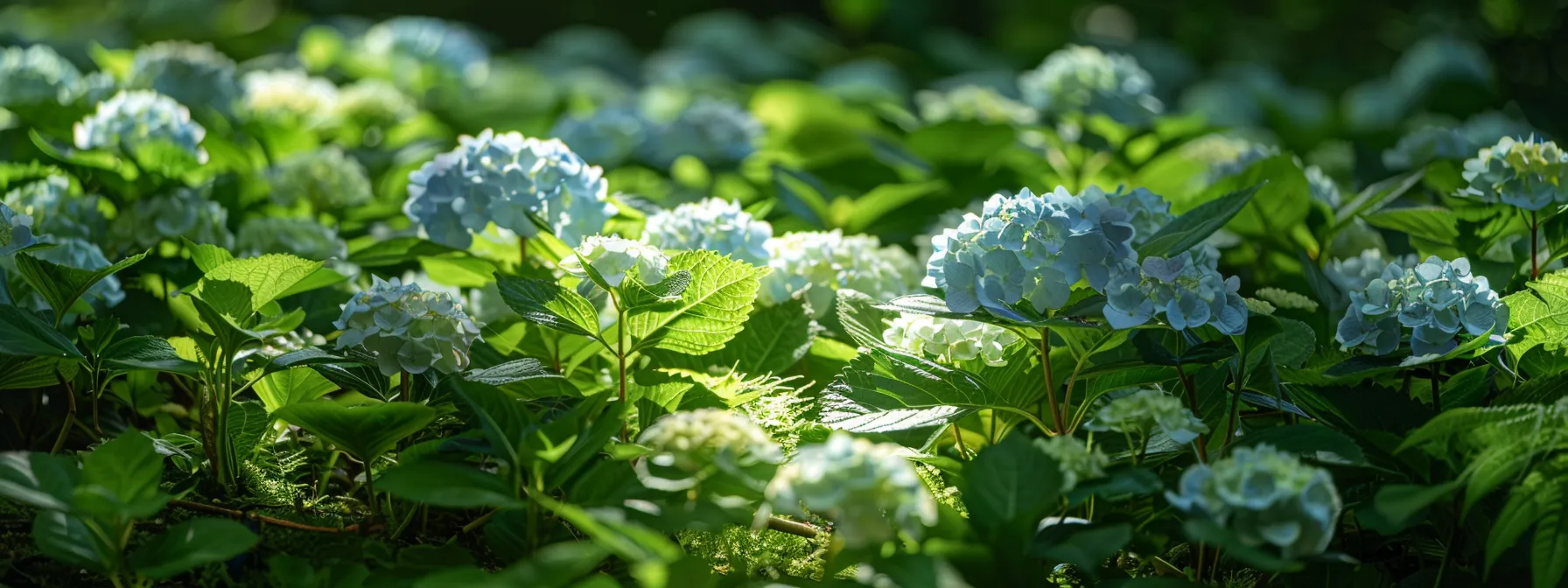
Lacecap hydrangeas, known for their delicate and intricate flower clusters, require specific care to thrive in various hardiness zones. These elegant shrubs prefer well-draining soil enriched with organic matter, such as well-rotted manure, to promote healthy growth and abundant blooming.
Gardeners should monitor their lacecap hydrangeas for signs of pest infestations, particularly beetle damage, which can compromise plant health. Regular inspections and prompt treatment with appropriate methods help maintain the plants’ vigour and appearance.
Proper air circulation is crucial for preventing mildew, a common issue affecting lacecap hydrangeas in humid conditions. Pruning to improve airflow and avoiding overhead watering can significantly reduce the risk of fungal diseases.
Providing adequate nutrition is essential for lacecap hydrangeas to produce their stunning floral displays. A balanced, slow-release fertiliser serves as an excellent food source, supporting overall plant health and encouraging prolific blooming.
Lacecap hydrangeas offer versatility in garden design, thriving in various settings from partial shade to dappled sunlight. Their unique flower structure adds visual interest to borders, woodland gardens, and container arrangements. To ensure successful cultivation of lacecap hydrangeas, gardeners should consider the following key aspects:
- Select an appropriate planting site based on the plant’s hardiness zone and light requirements
- Amend soil with organic matter to improve drainage and nutrient content
- Implement regular pest monitoring and control measures
- Maintain proper air circulation to prevent fungal diseases
- Provide balanced nutrition through appropriate fertilisation
Oakleaf

Oakleaf hydrangeas, distinctive flowering plants known for their lobed leaves resembling those of oak trees, require specific care to thrive. These shrubs prefer well-draining soil rich in organic matter to prevent root rot, a common issue in waterlogged conditions. Gardeners should ensure proper drainage when planting oakleaf hydrangeas to maintain healthy root systems.
The bark of oakleaf hydrangeas adds winter interest to the garden, exhibiting an attractive peeling texture as the plant matures. This unique characteristic makes them valuable additions to year-round landscape designs. Gardeners should avoid damaging the bark when pruning or maintaining the surrounding area to preserve its ornamental appeal.
As with other hydrangea varieties, oakleaf hydrangeas benefit from regular applications of organic matter to improve soil structure and nutrient content. Compost or well-rotted manure incorporated into the soil around the plant’s base provides essential nutrients for healthy growth and abundant blooming. This practice also helps retain moisture without risking waterlogged conditions that can lead to root rot.
Oakleaf hydrangeas serve as excellent flowering plants for partially shaded areas, producing striking conical flower clusters that transition from white to pink as they age. These blooms not only provide visual interest but also attract pollinators to the garden. Some gardeners may notice increased bird activity around oakleaf hydrangeas, as the shrubs offer shelter and nesting opportunities for various species.
Proper pruning is crucial for maintaining the health and shape of oakleaf hydrangeas. Gardeners should remove dead or damaged wood in late winter or early spring before new growth emerges. This practice promotes vigorous growth and ensures a bountiful display of flowers throughout the growing season. Regular maintenance, including mulching and appropriate watering, helps oakleaf hydrangeas establish strong root systems and resist potential issues like root rot.
Smooth
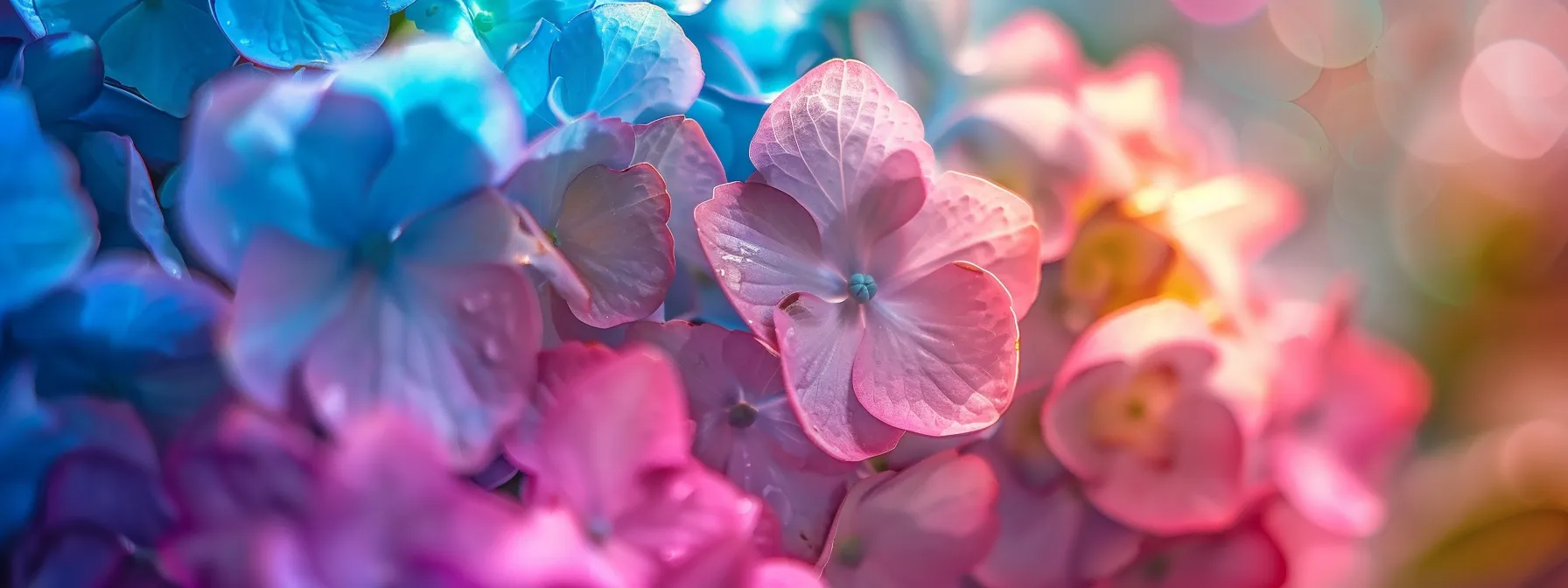
Smooth hydrangeas, known for their resilience and adaptability, thrive in various garden conditions. These hardy shrubs tolerate heat better than many other hydrangea species, making them ideal for warmer regions. Gardeners should ensure adequate watering during hot spells to maintain the plant’s lush appearance and promote healthy growth.
Proper fertilisation plays a crucial role in cultivating vibrant smooth hydrangeas. These plants benefit from nitrogen-rich fertilisers, which encourage lush foliage and abundant blooming. However, gardeners must exercise caution to avoid over-fertilisation, as excessive nitrogen can lead to reduced flower production.
The large, rounded flower heads of smooth hydrangeas make them popular choices for floral design. Their versatile blooms complement various arrangements, from rustic bouquets to elegant centrepieces. Gardeners can extend the usefulness of these flowers by drying them for long-lasting decorative displays.
When planning a garden layout, consider pairing smooth hydrangeas with early-blooming plants like crocus for a dynamic, season-long display. This combination provides visual interest from early spring through late summer, enhancing the overall appeal of the garden. Smooth hydrangeas also work well as backdrop plants for smaller perennials and annuals.
Unlike some hydrangea species, smooth hydrangeas do not change flower colour based on soil pH. However, gardeners can still influence the intensity of white or pink hues by adjusting soil nutrients. For instance, adding aluminium sulphate to the soil can enhance the vibrancy of pink varieties. The following table outlines key care aspects for smooth hydrangeas:
| Care Aspect | Recommendation | Benefit |
|---|---|---|
| Watering | Regular, especially during heat waves | Maintains plant health and vigour |
| Fertilisation | Balanced, nitrogen-rich formula | Promotes lush growth and blooming |
| Pruning | Late winter or early spring | Encourages new growth and flowering |
| Soil Amendment | Add organic matter annually | Improves soil structure and nutrition |
| Companion Planting | Pair with early-blooming species | Creates dynamic, season-long displays |
Panicle, or PeeGee

Panicle hydrangeas, also known as PeeGee hydrangeas, stand out for their resilience and adaptability in various garden settings. These hardy shrubs tolerate a wide range of soil conditions and can withstand both heat and cold better than many other hydrangea species. Gardeners often incorporate panicle hydrangeas into cottage garden designs, where their large, conical blooms create a stunning focal point.
Unlike some hydrangea varieties that struggle with winter damage, panicle hydrangeas typically emerge unscathed from snow and frost. Their robust nature makes them an excellent choice for gardeners in colder regions who desire reliable blooming performance. However, gardeners should remain vigilant for scale insects, which can occasionally infest panicle hydrangeas and compromise plant health.
Panicle hydrangeas benefit from regular pruning to maintain their shape and encourage abundant flowering. Gardeners should prune these shrubs in late winter or early spring before new growth emerges. This practice promotes vigorous growth and ensures a bountiful display of flowers throughout the growing season, rivalling even the most prolific tomato plants in terms of productivity.
To combat potential pest issues, gardeners can employ insecticidal soap as an effective and eco-friendly solution. This treatment helps control scale insects and other common pests without harming beneficial insects or compromising the plant’s health. Regular inspections and prompt treatment can prevent infestations from escalating and ensure the continued vitality of panicle hydrangeas.
The versatility of panicle hydrangeas extends to their use in both fresh and dried floral arrangements. Their large, cone-shaped flower clusters transition from white to pink as they mature, providing visual interest long after the blooming season ends. This characteristic makes panicle hydrangeas a valuable addition to any garden, offering beauty and utility throughout the year.
Climbing

Climbing hydrangeas offer a unique vertical element to gardens, transforming walls and fences into lush, flowering surfaces. These vigorous plants require sturdy support structures to thrive, as their mature weight can rival that of a large bone. Gardeners should ensure proper anchoring and regular maintenance to prevent damage to structures.
Proper irrigation is crucial for climbing hydrangeas, especially during establishment. Drip irrigation systems provide an efficient method for delivering consistent moisture to the roots, promoting healthy growth and abundant blooming. Gardeners should monitor soil moisture levels regularly and adjust watering schedules as needed.
The large, flat flower clusters of climbing hydrangeas resemble flying saucers, creating a dramatic visual impact in the garden. These unique blooms attract pollinators and add interest to vertical spaces. Gardeners can maximise the plant’s ornamental value by positioning climbing hydrangeas where their flowers can be easily appreciated.
To stay informed about the latest care techniques and cultivar developments, gardeners should consider subscribing to horticulture newsletters. These resources often provide valuable insights into climbing hydrangea maintenance, pest control, and pruning strategies. Regular updates can help gardeners optimise their care routines and address potential issues proactively.
Proper pruning is essential for maintaining the health and appearance of climbing hydrangeas. Gardeners should follow a regular pruning schedule to control growth, remove dead or damaged wood, and encourage new flowering shoots. A well-maintained climbing hydrangea can transform a garden space, creating a stunning vertical display:
- Assess and reinforce support structures annually
- Implement a consistent watering schedule, preferably using drip irrigation
- Position plants to showcase their unique flower clusters
- Stay informed through horticulture newsletters and expert resources
- Establish a regular pruning routine to maintain plant health and shape
Helpful Hints on Hydrangea Care

Gardeners should monitor humidity levels around hydrangeas, especially during dry spells. Increasing humidity by misting the leaves or placing a tray of water near the plants can help prevent wilting and promote healthy growth.
Winter protection is crucial for hydrangeas in colder regions. Gardeners can insulate plants by applying a thick layer of mulch around the base and wrapping the shrubs in burlap or horticultural fleece to shield them from harsh winds and frost damage.
Visiting a botanical garden can provide valuable insights into hydrangea care and variety selection. These curated spaces often showcase diverse hydrangea species and cultivars, offering inspiration for garden design and practical care techniques.
Some gardeners use rooting hormone to propagate hydrangeas from cuttings. This practice can increase the success rate of propagation, allowing enthusiasts to expand their hydrangea collection or share plants with fellow gardeners.
When transporting hydrangea cuttings or young plants, placing them in a plastic bag can help maintain moisture levels and prevent wilting. This simple technique protects delicate stems and leaves during transit, ensuring the plants arrive in optimal condition for transplanting or gifting.
Can Hydrangeas Grow in Full Hot Sun?

While hydrangeas generally prefer partial shade, some varieties can tolerate full sun exposure, especially in cooler climates like the United Kingdom. However, gardeners should exercise caution when planting hydrangeas in hot, sunny locations, as excessive heat and direct sunlight can stress the plants and lead to wilting or scorched leaves.
In areas with intense summer heat, hydrangeas benefit from protection provided by a north-facing wall or the dappled shade of larger trees. This strategy mimics the plant’s natural habitat and helps prevent heat stress, allowing the hydrangeas to thrive alongside other sun-loving perennials such as peonies.
Gardeners cultivating hydrangeas in full sun should pay close attention to soil moisture levels, as these plants require consistent watering to combat heat-induced stress. Installing a drip irrigation system or using soaker hoses can help maintain adequate soil moisture, particularly during prolonged dry spells common in greenhouse environments.
Sun-tolerant hydrangea varieties, such as Hydrangea paniculata and some Hydrangea arborescens cultivars, adapt better to full sun exposure than their shade-loving counterparts. These robust plants can withstand more intense light conditions, making them suitable choices for sunnier garden locations or mixed borders with varying light levels.
Regardless of sun exposure, hydrangeas remain susceptible to common garden pests like vine weevils. Gardeners should regularly inspect their plants for signs of infestation and implement appropriate control measures to ensure the health and vitality of their hydrangeas, whether grown in full sun or partial shade.
Planting - Where Is the Best Place to Plant a Hydrangea?
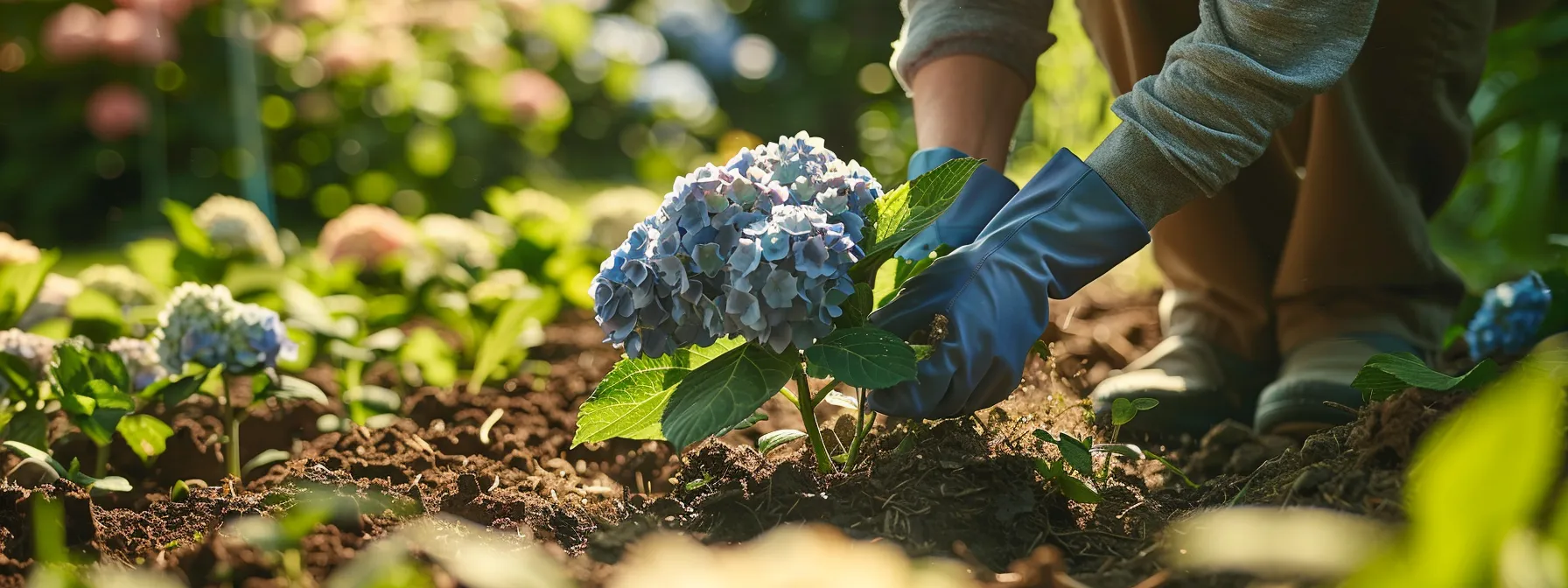
The ideal location for planting hydrangeas depends on several factors, including sunlight exposure, soil conditions, and protection from harsh elements. Most hydrangea varieties thrive in areas that receive morning sun and afternoon shade, mimicking their natural woodland habitat. Gardeners should avoid planting hydrangeas near pine trees, as the acidic soil conditions may not suit all varieties.
When selecting a planting site, consider the mature size of the hydrangea and ensure adequate space for growth. Well-draining soil rich in organic matter provides the best foundation for healthy hydrangeas. Gardeners should prepare the planting area by removing weeds and incorporating compost or well-rotted manure to improve soil structure and fertility.
Protection from strong winds is crucial for hydrangeas, as their large leaves and flower heads can suffer damage in exposed locations. Planting near a fence or wall can provide shelter and create a microclimate conducive to healthy growth. Avoid areas prone to waterlogging, as excessive moisture can lead to root rot and fungal diseases.
Consider the visual impact of hydrangeas in the garden landscape when choosing a planting location. These versatile shrubs can serve as focal points, act as living screens, or complement other plantings in mixed borders. Some gardeners incorporate hydrangeas into berry patches, creating a diverse and visually appealing garden ecosystem.
Once the ideal location is selected, proper planting techniques ensure successful establishment. Dig a hole twice the width of the root ball and at the same depth, place the plant, and backfill with soil. Water thoroughly and apply a layer of mulch to retain moisture and suppress weeds. Regular maintenance, including pruning with clean, sharp pruning shears, will help hydrangeas thrive in their chosen location. The following table outlines key considerations for selecting the best planting location for hydrangeas:
| Factor | Ideal Conditions | Considerations |
|---|---|---|
| Sunlight | Morning sun, afternoon shade | Avoid full sun in hot climates |
| Soil | Well-draining, rich in organic matter | Amend poor soil with compost |
| Protection | Sheltered from strong winds | Plant near fences or walls |
| Spacing | Allow for mature size | Consider spread and height |
| Drainage | Good drainage, avoid waterlogging | Improve drainage if necessary |
Optimal Soil Conditions

Hydrangeas thrive in well-draining soil rich in organic matter. Gardeners should aim for a loamy texture that retains moisture without becoming waterlogged. Incorporating compost or well-rotted manure improves soil structure and nutrient content, benefiting hydrangeas and companion plants like magnolia trees.
Soil pH plays a crucial role in hydrangea care, particularly for varieties that change flower colour based on soil acidity. Most hydrangeas prefer slightly acidic to neutral soil, with a pH range of 6.0 to 7.0. Gardeners can adjust soil pH using lime to raise it or sulphur to lower it, ensuring optimal growing conditions for their plants.
Proper soil preparation helps hydrangeas establish strong root systems and resist pests and diseases. Before planting, gardeners should remove weeds and debris, loosen the soil, and incorporate organic amendments. This preparation reduces the need for chemical interventions like insecticides, promoting a healthier garden ecosystem.
Vining hydrangeas, such as Hydrangea anomala petiolaris, require sturdy support structures and well-draining soil to thrive. These climbing plants benefit from soil enriched with organic matter and proper moisture management. Gardeners should ensure the soil around vining hydrangeas remains consistently moist but not waterlogged.
Regular soil testing helps gardeners maintain optimal conditions for their hydrangeas. Many gardening centres and cooperative extension offices offer soil testing services. Some even provide referral programmes, allowing gardeners to earn rewards for recommending friends to their soil testing services. By monitoring soil health, gardeners can address nutrient deficiencies and maintain ideal growing conditions for their hydrangeas:
- Test soil pH and nutrient levels annually
- Amend soil with organic matter to improve structure
- Adjust pH as needed for desired flower colours
- Ensure proper drainage to prevent root rot
- Monitor soil moisture levels regularly
Watering - What Is the Best Way to Water a Hydrangea?

Hydrangeas require consistent moisture to thrive, but overwatering can lead to root rot and other issues. The best way to water hydrangeas involves deep, infrequent watering that encourages strong root growth. Gardeners should aim to provide about 1 inch of water per week, adjusting for rainfall and temperature fluctuations.
When watering hydrangeas, including climbing varieties like hydrangea petiolaris, focus on the root zone rather than the foliage. This approach helps prevent fungal diseases and ensures water reaches the roots where it’s most needed. For vining hydrangea plants, pay special attention to the soil around the base of the plant, as these vigorous climbers have extensive root systems.
Morning watering is ideal for hydrangeas, as it allows foliage to dry before nightfall, reducing the risk of disease. Gardeners should use a soaker hose or drip irrigation system to deliver water directly to the soil, minimising water waste and keeping leaves dry. This method is particularly effective for hydrangea vines, which can be challenging to water evenly with overhead sprinklers.
During periods of drought or extreme heat, hydrangeas may require more frequent watering. Gardeners should monitor their plants closely and adjust watering schedules accordingly. A common FAQ among hydrangea enthusiasts concerns watering frequency; the answer depends on factors such as soil type, climate, and plant size.
Proper watering practices contribute to healthy plant growth and abundant blooms, ensuring a bountiful harvest of flowers for both fresh and dried arrangements. Gardeners should remember that consistent moisture is key to hydrangea success, whether growing traditional shrub forms or training vining varieties for vertical interest in the garden.
Fertilising - What's the Best Hydrangea Fertiliser?
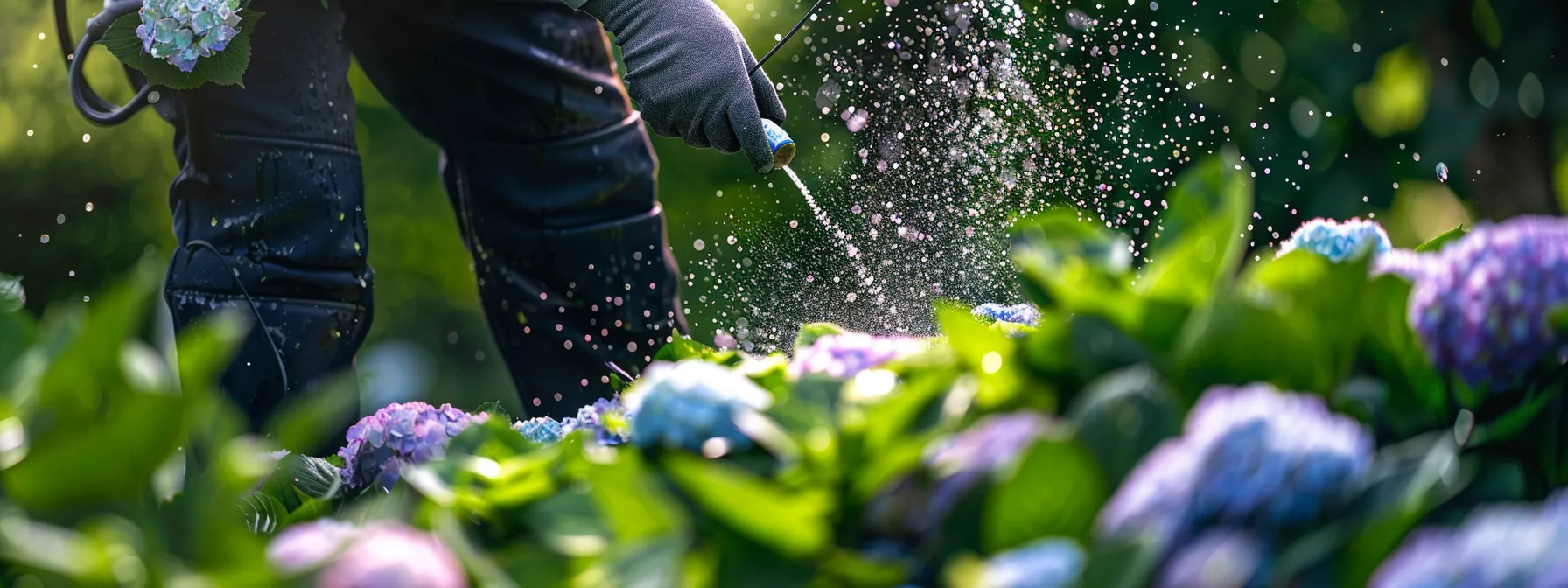
Selecting the right fertiliser for hydrangeas is crucial for their health and abundant blooming. A balanced, slow-release fertiliser with equal parts nitrogen, phosphorus, and potassium (NPK) typically provides the best results for most hydrangea varieties, including the popular ‘Limelight’ hydrangea. Gardeners in France often use specialised hydrangea fertilisers that cater to the specific needs of these plants in their climate.
For optimal nutrient uptake, gardeners should consider the layering technique when applying fertiliser to hydrangeas. This method involves spreading fertiliser around the base of the plant and gently incorporating it into the top layer of soil, ensuring even distribution of nutrients. The ‘Annabelle’ hydrangea, known for its large white blooms, particularly benefits from this approach, producing even more impressive floral displays.
Organic fertilisers, such as well-rotted manure or compost, provide an excellent alternative to synthetic options. These natural amendments not only nourish hydrangeas but also improve soil structure and promote beneficial microbial activity. Gardeners often find that companion planting with ferns helps create a nutrient-rich environment for hydrangeas, as ferns contribute to soil health and moisture retention.
The timing of fertiliser application plays a crucial role in hydrangea care. Most experts recommend fertilising in early spring as new growth emerges, with a second application in late spring or early summer to support continued growth and blooming. However, gardeners should avoid fertilising hydrangeas after August, as this can stimulate new growth that may be vulnerable to winter damage.
When fertilising hydrangeas, it’s essential to consider the plant’s specific needs and the soil conditions. Some hydrangea varieties, particularly those that change colour based on soil pH, may require specialised fertilisers to achieve desired bloom colours. Gardeners should conduct regular soil tests to ensure they’re providing the appropriate nutrients for their hydrangeas to thrive and produce stunning floral displays.
Pruning - Should I Cut Down My Hydrangea for Winter?
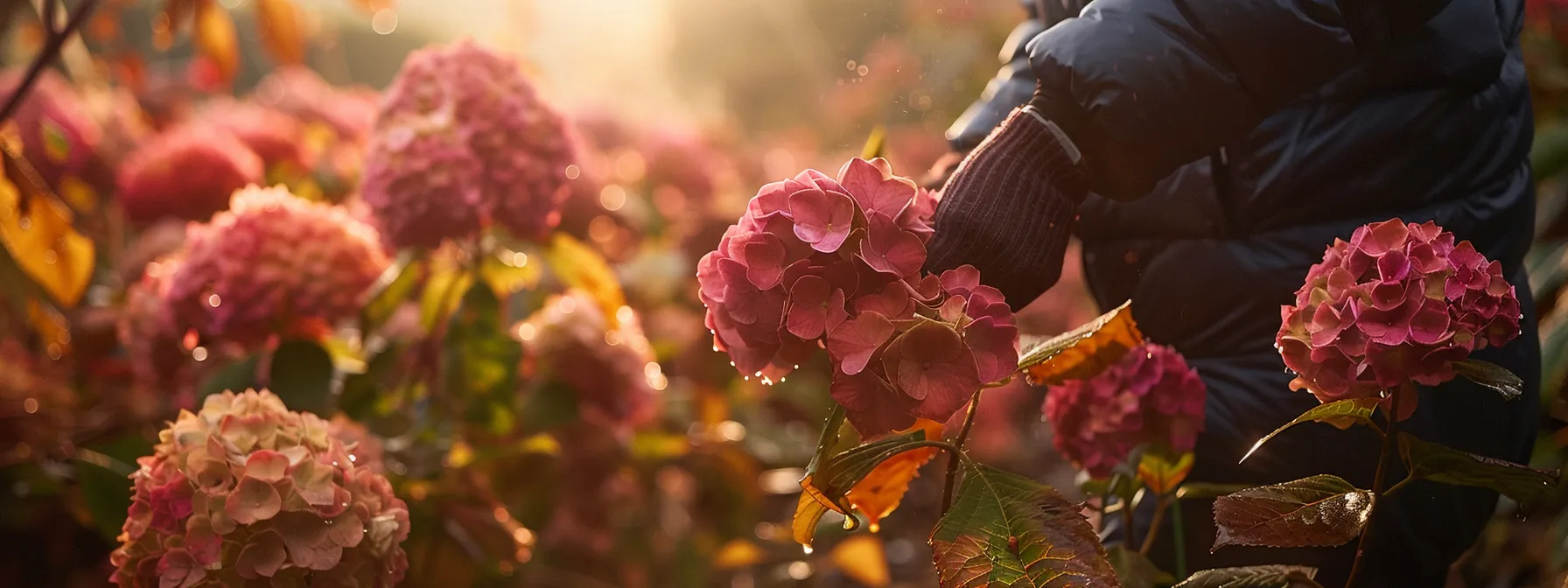
Pruning hydrangeas for winter depends on the specific variety and its blooming habits. The popular ‘Strawberry Vanilla’ hydrangea, known for its colour-changing blooms, benefits from light pruning in late winter or early spring to promote vigorous growth and abundant flowering.
The ‘Incrediball’ hydrangea, a cultivar of Hydrangea arborescens, requires minimal winter pruning. Gardeners should focus on removing dead or damaged stems in early spring, as this variety blooms on new wood and responds well to rejuvenation pruning.
White hydrangeas, such as the classic ‘Annabelle’ variety, typically bloom on new growth and can be cut back to about 15-30 cm above ground level in late winter. This pruning technique encourages sturdy stems and large, showy flower heads in the following season.
The compact ‘Little Lime’ hydrangea, a dwarf variety of the ‘Limelight’ cultivar, requires only light pruning in late winter or early spring. Gardeners should remove any dead or crossing branches to maintain the plant’s shape and promote healthy growth.
For the diminutive ‘Bobo’ hydrangea, a panicle variety known for its profuse blooming, winter pruning should be minimal. Gardeners should focus on removing spent flower heads and shaping the plant in early spring, as excessive pruning may reduce the number of blooms in the upcoming season.
Hydrangea Flowers - Bloom Times and Colour Changes

Pink hydrangeas captivate gardeners with their delicate hues and abundant blooms. These popular varieties typically flower from late spring to early autumn, offering a long-lasting display of colour in the garden. Gardeners can influence the intensity of pink blooms by adjusting soil pH, with more alkaline conditions promoting deeper pink hues.
The strawberry hydrangea, known for its unique colour progression, begins with white blooms that gradually transform to pink and then deep red. This striking variety adds visual interest to gardens throughout the growing season, with peak colour typically occurring in late summer to early autumn. Gardeners appreciate the strawberry hydrangea for its ability to create a dynamic and ever-changing display.
Climbing hydrangeas for sale offer gardeners an opportunity to add vertical interest to their landscapes. These vigorous vines produce clusters of delicate white flowers against a backdrop of lush, dark green foliage. Climbing hydrangeas typically bloom in late spring to early summer, providing a stunning display on walls, fences, or trellises.
The climbing hydrangea’s versatility makes it a popular choice for various garden styles. These adaptable plants thrive in partial shade and prefer well-draining, moist soil. Gardeners should ensure proper support structures are in place to accommodate the plant’s growth, as mature climbing hydrangeas can become quite heavy.
Endless Summer hydrangeas have revolutionised hydrangea cultivation with their ability to bloom on both old and new wood. This unique characteristic allows for a longer flowering period, often extending from early summer well into autumn. Gardeners appreciate the Endless Summer series for its reliable performance and the option to adjust bloom colours by modifying soil pH.
Bloom Times

The oakleaf hydrangea showcases its distinctive blooms from late spring to midsummer. This variety’s elongated flower clusters transform from pristine white to a rich pink as the season progresses, offering an ever-changing display of colour in the garden.
Blue hydrangea varieties typically flower from early to midsummer, with some cultivars reblooming in early autumn. Gardeners can enhance the intensity of blue blooms by maintaining acidic soil conditions, a practice that many blue hydrangea enthusiasts eagerly embrace.
When searching for hydrangeas for sale, gardeners should consider the bloom times of different varieties to ensure a continuous display throughout the growing season. Many garden centres and online retailers offer a wide selection of hydrangeas with staggered flowering periods, allowing for a vibrant and long-lasting garden display.
The panicle hydrangea stands out for its late-season blooming habit, typically flowering from midsummer to early autumn. This hardy variety’s cone-shaped flower clusters start white and gradually take on pink or red hues, providing visual interest well into the cooler months.
Hydrangea plants vary in their bloom times depending on species, cultivar, and growing conditions. Gardeners can extend the overall flowering period in their landscapes by selecting a diverse range of hydrangea varieties, ensuring a succession of blooms from late spring through early autumn.
Colours

Hydrangea plants for sale offer a stunning array of colours, ranging from pristine whites to vibrant blues, pinks, and purples. The soil pH plays a crucial role in determining the flower colour of certain hydrangea varieties, particularly those in the macrophylla species. Gardeners can manipulate bloom colours by adjusting soil acidity, with acidic soils promoting blue hues and alkaline conditions encouraging pink tones.
When considering how to care for hydrangeas, maintaining proper soil conditions is essential for achieving desired flower colours. Regular soil testing and appropriate amendments help gardeners maintain optimal pH levels for their preferred hydrangea hues. Some varieties, such as oakleaf and panicle hydrangeas, maintain consistent flower colours regardless of soil pH.
The amount of sun hydrangeas need varies depending on the variety and local climate. Generally, most hydrangeas thrive in locations that receive morning sun and afternoon shade. In cooler regions, some varieties can tolerate more sun exposure, while in hotter climates, protection from intense afternoon sun becomes crucial for preventing leaf scorch and maintaining vibrant flower colours.
Knowing how and when to plant hydrangeas is crucial for establishing healthy, colourful plants. The ideal planting time is typically in spring or autumn when temperatures are mild and rainfall is more frequent. Gardeners should ensure proper spacing based on the mature size of their chosen hydrangea variety, allowing ample room for growth and air circulation.
Hydrangeas can grow quite large, with some varieties reaching heights and widths of up to 3 metres or more. The mature size depends on the specific cultivar and growing conditions. Gardeners should consider the potential size of their hydrangeas when planning garden layouts and selecting planting locations to ensure these magnificent shrubs have sufficient space to display their colourful blooms.
Containers - Can You Grow Hydrangeas in Pots?

Hydrangeas adapt well to container growing, offering gardeners flexibility in their landscape designs. When considering how big hydrangea bushes get, it’s essential to choose compact varieties suitable for pot cultivation, as some species can reach impressive sizes in optimal conditions.
Container-grown hydrangeas typically remain smaller than their in-ground counterparts, but gardeners should still account for the mature size of their chosen variety. Understanding how big hydrangea get helps in selecting appropriately sized containers and positioning them effectively in the garden or on patios.
The growth potential of potted hydrangeas depends on various factors, including container size, soil quality, and care practices. Gardeners wondering how big hydrangea grow in containers should provide ample space for root development and ensure proper nutrition to support healthy growth and abundant blooming.
When planning container gardens, it’s crucial to consider how big hydrangea plants get to avoid overcrowding and ensure adequate air circulation. Regular pruning and root maintenance help manage the size of container-grown hydrangeas, allowing gardeners to enjoy these beautiful shrubs in limited spaces.
Gardeners should research specific varieties to determine how big will hydrangeas grow in their chosen containers. This knowledge enables them to select appropriate companions for mixed plantings and ensure their potted hydrangeas receive the care and space they need to thrive and produce stunning floral displays.
Potted Outdoor Hydrangeas
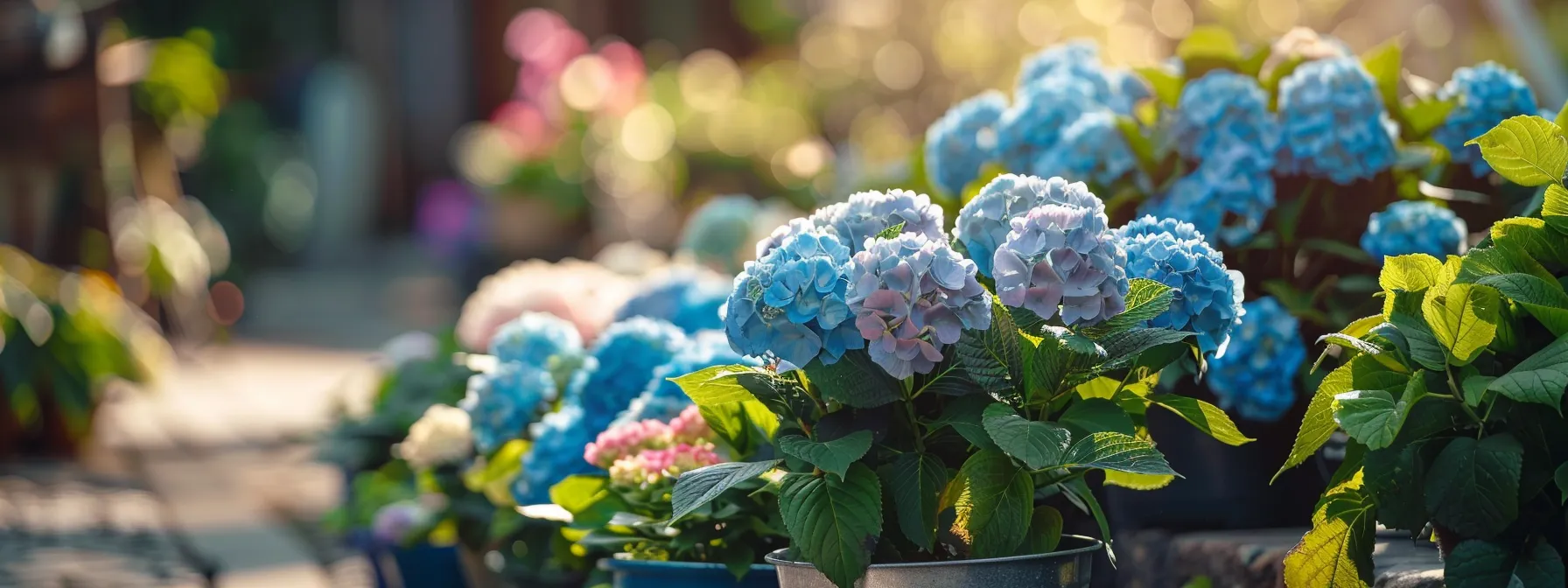
Potted outdoor hydrangeas offer gardeners flexibility in design and placement. Understanding how hydrangeas grow in containers is crucial for their success. These versatile shrubs adapt well to pot culture, provided they receive proper care and attention.
When considering how hydrangeas grow in pots, gardeners should select compact varieties suitable for container cultivation. Dwarf cultivars and smaller species like Hydrangea serrata thrive in pots, maintaining a manageable size while still producing abundant blooms.
The growth rate of potted hydrangeas depends on several factors, including container size, soil quality, and care practices. Gardeners must provide ample space for root development and ensure proper nutrition to support healthy growth and flowering. Regular monitoring of soil moisture is essential, as potted hydrangeas dry out more quickly than their in-ground counterparts.
Pruning plays a crucial role in managing the size and shape of container-grown hydrangeas. Gardeners should familiarise themselves with the specific pruning requirements of their chosen variety to promote optimal growth and blooming. Understanding how hydrangeas grow in response to pruning helps maintain healthy, compact plants suitable for container culture.
Successful cultivation of potted outdoor hydrangeas requires attention to several key factors. These include selecting the right container, providing appropriate soil and nutrients, ensuring proper drainage, and protecting plants from extreme weather conditions. The following table outlines essential considerations for growing hydrangeas in containers:
| Factor | Recommendation | Importance |
|---|---|---|
| Container Size | Choose pots at least 40-50 cm in diameter | Allows adequate root growth |
| Soil Mix | Use well-draining, moisture-retentive potting mix | Prevents waterlogging and root rot |
| Watering | Water deeply when top inch of soil feels dry | Maintains consistent moisture levels |
| Fertilisation | Apply balanced, slow-release fertiliser in spring | Supports healthy growth and blooming |
| Winter Protection | Move pots to sheltered location or insulate | Prevents frost damage to roots |
Hydrangeas as Houseplants

Hydrangeas can thrive as houseplants when provided with proper care and attention. These versatile shrubs adapt well to indoor environments, offering gardeners the opportunity to enjoy their stunning blooms year-round. Selecting compact varieties suitable for container cultivation is crucial for successful indoor hydrangea growth.
Indoor hydrangeas require bright, indirect light to flourish. Placing them near a north-facing window or in a room with filtered sunlight provides optimal growing conditions. Gardeners should rotate the plants regularly to ensure even growth and prevent leaning towards light sources.
Maintaining consistent moisture levels is essential for indoor hydrangeas. Gardeners should water thoroughly when the top inch of soil feels dry, allowing excess water to drain freely. Avoid overwatering, as this can lead to root rot and other fungal issues.
Indoor hydrangeas benefit from regular fertilisation during the growing season. A balanced, water-soluble fertiliser applied every two weeks supports healthy growth and abundant blooming. Gardeners should reduce fertilisation frequency during winter months when plant growth naturally slows.
Pruning indoor hydrangeas helps maintain their shape and promote vigorous growth. Gardeners should remove spent blooms and trim back leggy stems to encourage bushier growth. Understanding the specific pruning requirements of different hydrangea varieties ensures optimal care for these beautiful indoor plants:
| Care Aspect | Recommendation | Frequency |
|---|---|---|
| Light | Bright, indirect sunlight | Daily |
| Watering | Thorough when top inch of soil is dry | As needed |
| Fertilisation | Balanced, water-soluble fertiliser | Bi-weekly during growing season |
| Pruning | Remove spent blooms, trim leggy stems | As needed, typically after flowering |
| Humidity | Mist leaves or use pebble tray | Regular basis, especially in dry environments |
Hydrangea Problems, Pests and Diseases

Hydrangeas face various challenges throughout their growth cycle, including pests, diseases, and environmental stressors. Common issues include leaf spot, powdery mildew, and root rot, which can compromise the plant’s health and appearance. Gardeners should regularly inspect their hydrangeas for signs of these problems and take prompt action to address them.
Pests such as aphids, spider mites, and scale insects can infest hydrangeas, causing damage to leaves and stems. These invaders often thrive in stressed plants, making proper care and maintenance crucial for pest prevention. Gardeners can employ natural predators, insecticidal soaps, or targeted chemical treatments to manage pest populations effectively.
Environmental factors like excessive sun exposure, improper watering, and nutrient deficiencies can lead to stunted growth, leaf discolouration, and reduced flowering in hydrangeas. Gardeners should assess their plants’ growing conditions regularly and make necessary adjustments to ensure optimal health and performance.
Fungal diseases pose a significant threat to hydrangeas, particularly in humid or poorly ventilated environments. Proper spacing, adequate air circulation, and avoiding overhead watering can help prevent the spread of fungal spores and reduce the risk of infection. In severe cases, fungicides may be necessary to control outbreaks and protect the plant’s overall health.
Winter damage, including frost injury and desiccation, can affect hydrangeas in colder regions. Gardeners should provide winter protection by mulching heavily around the base of the plant and wrapping sensitive varieties in burlap or horticultural fleece. Proper pruning techniques, tailored to specific hydrangea types, can also help minimise winter damage and promote healthy growth in the following season.
How to Grow Climbing Hydrangeas
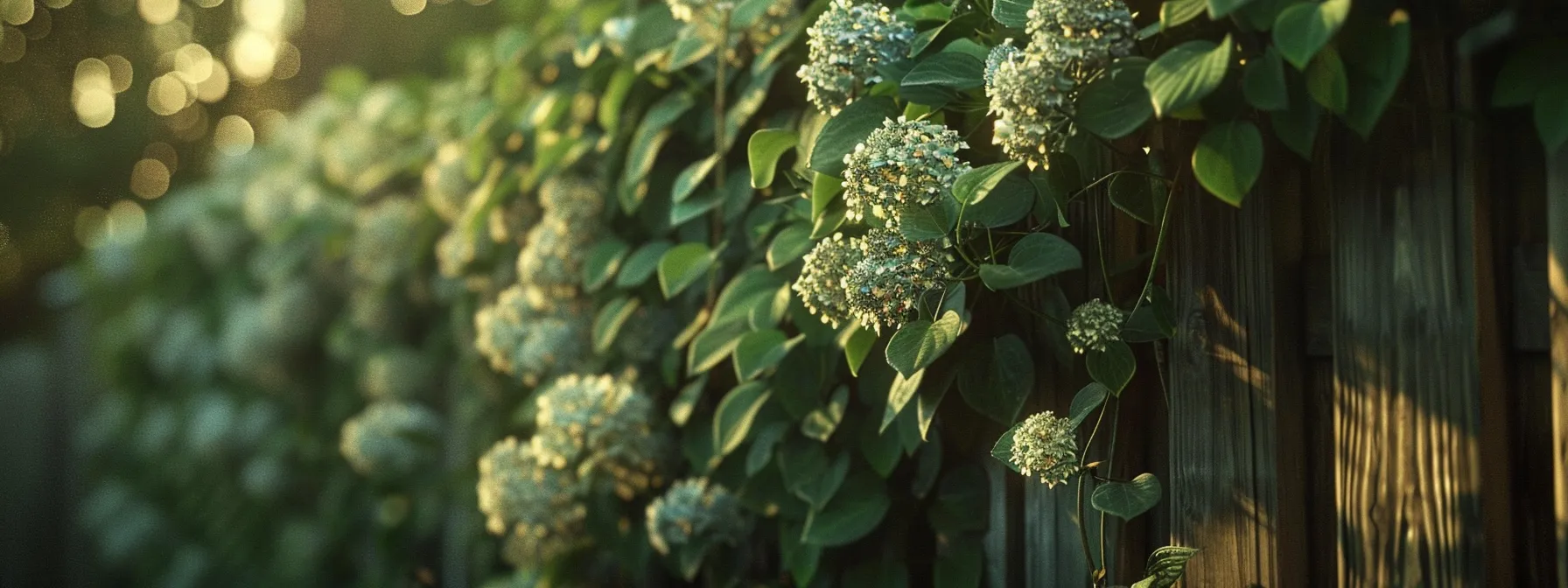
Climbing hydrangeas, particularly Hydrangea petiolaris, offer a unique vertical element to gardens, transforming walls and fences into lush, flowering surfaces. These vigorous climbers require specific care and attention to thrive, from selecting the ideal planting location to mastering pruning techniques. Gardeners must consider factors such as soil preparation, support structures, and potential problems when cultivating climbing hydrangeas. This section explores the essential aspects of growing and maintaining these stunning plants, including propagation methods and troubleshooting common issues, to help gardeners achieve success with their climbing hydrangea specimens.
Climbing Hydrangeas: Jump Links
Climbing hydrangeas offer gardeners a unique opportunity to add vertical interest to their landscapes. These versatile plants require specific care and attention to thrive, making it essential for gardeners to access relevant information quickly and easily. Jump links provide a convenient navigation tool, allowing readers to move directly to the sections most pertinent to their needs.
By incorporating jump links into articles about climbing hydrangeas, gardeners can efficiently locate information on topics such as planting techniques, pruning methods, and pest management. This streamlined approach enhances the user experience and enables readers to make the most of their time when researching these stunning climbers. Jump links also help organise complex information into manageable sections, making it easier for gardeners to digest and apply the knowledge to their own plants.
Effective use of jump links in climbing hydrangea guides ensures that both novice and experienced gardeners can quickly find the specific information they need. Whether searching for tips on soil preparation, support structures, or troubleshooting common issues, readers can navigate directly to the relevant sections, saving time and improving their overall understanding of climbing hydrangea care. This efficient organisation of information contributes to successful cultivation and maintenance of these beautiful climbing plants.
More on Growing Hydrangeas
Hydrangeas offer gardeners a diverse range of options beyond climbing varieties, including shrub forms, tree-like specimens, and compact cultivars suitable for containers. These versatile plants thrive in various garden settings, from shaded woodland areas to sunny borders, providing long-lasting blooms and attractive foliage. Gardeners can explore different hydrangea species to find the perfect match for their landscape needs and aesthetic preferences.
Successful hydrangea cultivation relies on proper soil preparation and ongoing maintenance. Gardeners should focus on creating well-draining, nutrient-rich soil conditions to support healthy root development and abundant flowering. Regular pruning, tailored to specific hydrangea types, helps maintain plant shape and encourages vigorous growth.
Experimenting with hydrangea flower colours adds an exciting dimension to gardening. By adjusting soil pH levels, gardeners can influence bloom hues in certain varieties, creating stunning displays of blue, pink, or purple flowers. This unique characteristic allows for creative garden designs and provides an opportunity for gardeners to fine-tune their hydrangea displays to complement existing landscape elements.
Where to Plant Climbing Hydrangeas
Climbing hydrangeas thrive in partial shade to full shade, making them ideal for north-facing walls or areas that receive limited direct sunlight. These versatile climbers adapt well to various soil types but prefer rich, well-draining soil with consistent moisture. Gardeners should choose a location that provides adequate support for the plant’s mature size, as climbing hydrangeas can reach impressive heights and widths over time.
When selecting a planting site, consider the long-term impact of the climbing hydrangea on surrounding structures. These vigorous climbers attach themselves to surfaces using aerial rootlets, which can potentially damage weak or poorly maintained walls. Opt for sturdy, well-maintained surfaces such as brick, stone, or solid wooden fences to support the plant’s growth without risking structural damage.
Climbing hydrangeas benefit from protection against harsh winds and extreme temperature fluctuations. Planting near the base of a deciduous tree or in a sheltered corner of the garden provides an ideal microclimate for these plants to establish and thrive. Ensure sufficient space for root development and consider the potential impact on nearby plants, as climbing hydrangeas can compete for resources and may overshadow smaller specimens if left unchecked.
When to Plant Hydrangeas
The optimal time to plant climbing hydrangeas is typically in early spring or autumn when temperatures are mild and rainfall is more frequent. These seasons provide ideal conditions for root establishment and reduce transplant shock. Gardeners should avoid planting during periods of extreme heat or cold to ensure the best chance of success.
When planting climbing hydrangeas in spring, aim to do so after the last frost but before the onset of summer heat. This timing allows the plant to develop a strong root system before facing the challenges of hot weather. Autumn planting can be equally successful, provided it’s done early enough for roots to establish before winter dormancy sets in.
Regardless of the planting season, gardeners should consider local climate conditions and specific hydrangea varieties when determining the best time to plant. Some factors to consider when deciding on the optimal planting time include:
- Local frost dates and growing season length
- Soil temperature and moisture levels
- Availability of young, healthy plants from nurseries
- Time required for proper site preparation and support structure installation
How to Plant Hydrangea Petiolaris
Planting Hydrangea petiolaris requires careful preparation and attention to detail. Begin by selecting a suitable location with partial shade and well-draining soil. Dig a hole twice the width of the root ball and at the same depth, ensuring the plant sits at the same level as it did in its nursery container.
Before placing the plant in the hole, gently loosen the roots to encourage outward growth. Position the climbing hydrangea near its intended support structure, whether a wall, fence, or trellis. Backfill the hole with a mixture of native soil and compost, firming gently to eliminate air pockets.
After planting, water thoroughly to settle the soil and provide essential moisture for root establishment. Apply a 5-7 cm layer of organic mulch around the base of the plant, keeping it away from the stem to prevent rot. Consider installing a temporary support system to guide the young climber towards its permanent structure:
- Use garden twine to loosely tie main stems to the support
- Install bamboo canes or wire mesh for initial climbing guidance
- Monitor growth regularly and adjust ties as needed
- Provide additional support for heavy growth during the first few seasons
Where to Buy Hydrangea Petiolaris Online
Numerous online nurseries and garden centres offer Hydrangea petiolaris for purchase, providing gardeners with convenient access to this stunning climbing variety. Reputable retailers such as Crocus, Thompson & Morgan, and RHS Plants stock a range of sizes and cultivars, allowing customers to select plants that best suit their garden needs. When choosing an online supplier, consider factors such as plant quality, shipping policies, and customer reviews to ensure a satisfactory purchase experience.
Specialised hydrangea nurseries often provide a wider selection of Hydrangea petiolaris varieties, including rare or unusual cultivars. These dedicated suppliers may offer expert advice on plant care and cultivation, making them an excellent choice for gardeners seeking specific varieties or in-depth information. Some online marketplaces, like eBay and Amazon, also feature listings from independent sellers, potentially offering competitive prices or unique specimens.
Local garden centres and nurseries frequently maintain online shops, allowing customers to browse and purchase Hydrangea petiolaris plants for collection or delivery. This option combines the convenience of online shopping with the opportunity to support local businesses and potentially inspect plants before purchase. Gardeners should compare prices, shipping costs, and plant sizes across multiple retailers to find the best value for their investment in climbing hydrangeas.
Caring for Climbing Hydrangeas
Caring for climbing hydrangeas requires consistent attention to their unique needs. These vigorous climbers thrive in partial shade and benefit from regular watering, especially during dry spells. Gardeners should maintain moist but well-draining soil to support healthy growth and abundant flowering.
Pruning plays a crucial role in maintaining the shape and size of climbing hydrangeas. Gardeners should remove dead, damaged, or crossing branches in late winter or early spring, before new growth emerges. Avoid heavy pruning, as climbing hydrangeas flower on old wood, and excessive cutting can reduce blooming potential.
Fertilisation supports the robust growth of climbing hydrangeas. Apply a balanced, slow-release fertiliser in early spring, following the manufacturer’s recommendations for application rates. Mulching around the base of the plant helps retain moisture, suppress weeds, and provide additional nutrients as the organic matter breaks down.
How to Prune Hydrangea Petiolaris
Pruning Hydrangea petiolaris requires a delicate touch to maintain its natural form and encourage healthy growth. Gardeners should focus on removing dead, damaged, or crossing branches in late winter or early spring, before new growth emerges. This approach preserves the plant’s flowering potential, as Hydrangea petiolaris blooms on old wood.
Avoid heavy pruning of climbing hydrangeas, as excessive cutting can significantly reduce flower production. Instead, concentrate on shaping the plant by selectively trimming wayward shoots and controlling its spread. Gardeners may need to remove some of the plant’s aerial rootlets if they begin to encroach on gutters or other sensitive areas.
After flowering, gardeners can lightly trim Hydrangea petiolaris to maintain its desired shape and size. Remove spent flower heads and any overly long or straggly stems to promote a tidy appearance. This gentle post-bloom pruning also helps redirect the plant’s energy towards producing new growth and flower buds for the following season.
How to Propagate Hydrangea Petiolaris
Propagating Hydrangea petiolaris offers gardeners an opportunity to expand their collection of these stunning climbing plants. The most effective method involves taking softwood cuttings in late spring or early summer, when new growth is pliable but not overly tender. Select healthy, non-flowering shoots approximately 10-15 cm long, making clean cuts just below a leaf node.
Prepare the cuttings by removing the lower leaves and trimming the remaining foliage to reduce water loss. Dip the cut ends in rooting hormone powder to encourage root development, then insert them into pots filled with a well-draining propagation mix. Maintain high humidity around the cuttings by covering them with clear plastic bags or placing them in a propagator.
Roots typically develop within 4-6 weeks, at which point gardeners can gradually acclimatise the new plants to normal growing conditions. Once well-established, transplant the young Hydrangea petiolaris specimens to their permanent positions in the garden, providing appropriate support structures for their climbing habit. With patience and proper care, these propagated plants will mature into beautiful, flowering climbers.
Climbing Hydrangeas: Problem Solving
Climbing hydrangeas occasionally face challenges that require prompt attention from gardeners. Common issues include poor flowering, leaf discolouration, and pest infestations. Addressing these problems early helps maintain the plant’s health and ensures a stunning vertical display in the garden.
Insufficient flowering often results from improper pruning or inadequate sunlight. Gardeners should avoid excessive pruning and ensure climbing hydrangeas receive enough light to produce abundant blooms. Adjusting care practices and relocating plants if necessary can significantly improve flowering performance.
Pest management plays a crucial role in maintaining healthy climbing hydrangeas. Regular inspections help identify and address issues such as aphids, scale insects, or spider mites before they cause significant damage. Implementing integrated pest management strategies promotes plant health while minimising environmental impact:
- Monitor plants regularly for signs of pest activity
- Encourage natural predators by creating diverse garden habitats
- Use targeted treatments, such as insecticidal soaps, when necessary
- Maintain proper plant care to reduce susceptibility to pest infestations
Frequently Asked Questions
How often should I water my hydrangea plants?
Hydrangeas typically require watering once or twice a week during the growing season, depending on weather conditions and soil type. Water deeply when the top inch of soil feels dry, ensuring the roots receive adequate moisture without becoming waterlogged. Adjust frequency based on rainfall and temperature.
Can I change the colour of my hydrangea flowers?
Yes, you can change the colour of hydrangea flowers by altering the soil pH. Adding lime to the soil makes it more alkaline, resulting in pink blooms, while adding sulphur makes it more acidic, producing blue flowers. White hydrangeas, however, remain unaffected by soil pH changes.
When is the best time to prune different types of hydrangeas?
The best time to prune hydrangeas depends on their type. Prune mophead and lacecap varieties in late winter or early spring before new growth appears. Trim oakleaf and panicle hydrangeas in late winter or early spring. Prune smooth hydrangeas in late winter or early spring.
What are common pests and diseases that affect hydrangeas?
Hydrangeas often face challenges from pests like aphids, spider mites, and Japanese beetles. Common diseases include powdery mildew, leaf spot, and root rot. Proper care, including adequate watering and good air circulation, can help prevent many of these issues.
How do I grow hydrangeas in containers successfully?
To grow hydrangeas successfully in containers, choose a large pot with drainage holes, use well-draining potting mix, and place in partial shade. Water regularly, especially during dry spells, and feed with a balanced fertiliser. Prune in late winter or early spring to encourage new growth.
Conclusion
Proper hydrangea care ensures vibrant blooms and healthy plants, transforming gardens into stunning displays of colour and texture. This comprehensive guide equips gardeners with essential knowledge on soil preparation, watering techniques, pruning methods, and pest management, enabling them to nurture thriving hydrangeas in various settings. By understanding the specific needs of different hydrangea varieties and adapting care practices accordingly, gardeners can enjoy these versatile shrubs’ beauty year after year. Mastering hydrangea care not only enhances the aesthetic appeal of landscapes but also provides a rewarding gardening experience, fostering a deeper connection with nature and the joy of cultivating these magnificent plants.

